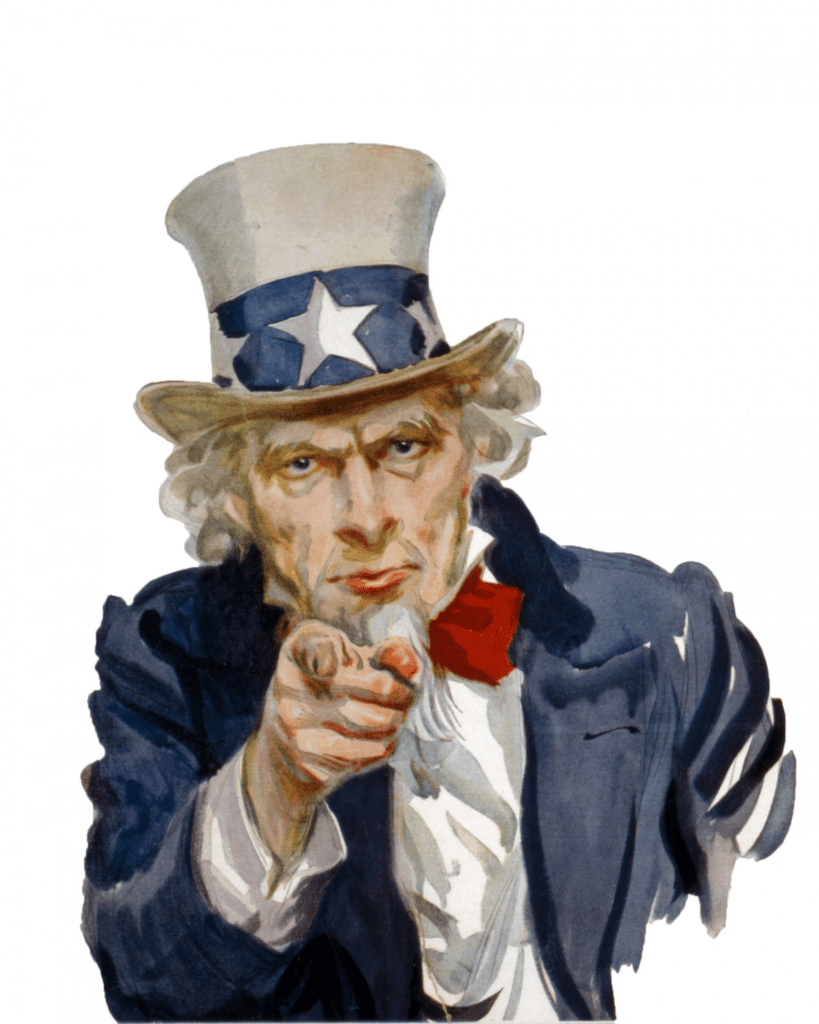Propaganda techniques have been crucial in shaping public opinion for over a century. From posters and films in World War I to social media manipulation in today’s elections, these tools have continually evolved. However, their fundamental tactics such as emotional appeal, misinformation, and narrative control, remain constant, allowing those in power to influence perceptions effectively. As Public Relations professionals, understanding these techniques and navigating through PR’s ethical minefield is essential.
World War I: The Birth of Modern Propaganda
In World War I, governments mastered the art of propaganda to rally their citizens and demonize enemies. Posters, films, speeches, and rallies became standard methods to stoke patriotism, fear, and hatred. These techniques sought to simplify complex political realities into digestible emotional appeals, convincing citizens that their efforts were essential to the war. The “Uncle Sam Wants You” poster and vilifying German soldiers as “barbarians” are prime examples.

Techniques such as emotional manipulation and demonization of the enemy were key. These strategies were designed to elicit emotional reactions—fear, anger, and pride—making people more susceptible to oversimplified messages. Governments could shift entire populations’ opinions in favor of war, justifying sacrifices like rationing or conscription. As a Marketing, Muckraking podcast over propaganda highlights, these early propaganda efforts laid the groundwork for modern political marketing by showing the power of emotional appeals to control public sentiment, (Rachael Kay Albers, Host, s1-ep20, The History of Marketing, Propaganda, and Politics From WWI to Trump, 2022).
Modern Propaganda: The Role of Social Media
Today, the core tactics of World War I propaganda remain but have been supercharged by social media. Platforms like Facebook, Twitter, and YouTube enable the rapid spread of information—and misinformation. During recent elections, these tools have been used to amplify divisive messages, exploit confirmation bias, and spread “fake news” to sway voters.

Social media algorithms often favor polarizing content, which fuels emotional reactions and deepens ideological divides. This environment makes modern propaganda more dangerous, as it doesn’t just inform but inflames public discourse. A study published by MIT noted that false news spreads six times faster than the truth on social media, showing the extent to which propaganda can dominate the digital space, (Zach Church, 2018).
Divisive Techniques and Ethical Lessons
Propaganda in its modern form often use three different techniques.
Appealing to emotion: Political ads and social media posts are filled with content that triggers anger, fear, or anxiety. Political actors know that people are more likely to share content that evokes strong feelings, making emotional manipulation a go-to technique.
Misinformation: The rise of “fake news“ is one of the most damaging forms of propaganda. By intentionally spreading misleading or false information, political campaigns can sow confusion and disillusionment, making it harder for voters to discern the truth. The 2016 U.S. presidential election saw an alarming amount of misinformation spread, leading to widespread distrust in media and democratic processes, (Hunt Allcott, Matthew Gentzkow, 2017).
Narrative control: By controlling the flow of information, political campaigns can craft stories that fit their agenda. This method was used both in World War I and in modern politics, where spin doctors and media consultants carefully manage candidates’ images. By controlling the narrative, propagandists can manipulate how events are perceived.
Ethical Navigation for PR Professionals
In this landscape, how can PR professionals maintain ethical integrity? First, transparency is crucial. PR practitioners must ensure that their messaging is clear, factual, and avoids misleading the public. According to the Public Relations Society of America (PRSA), transparency is a core principle for ethical PR professionals, who should never intentionally provide false or misleading information.
Another critical aspect is media literacy. Educating audiences to recognize propaganda techniques—whether in political campaigns or corporate messaging—is a significant step toward fostering a more informed public. PR professionals should take the opportunity to engage in campaigns that promote media literacy and critical thinking, encouraging the public to verify information before accepting it as truth
The Ongoing Role of Propaganda
As we’ve seen, propaganda techniques from World War I continue to thrive in the digital age. Social media has transformed propaganda into a more pervasive, fast-moving force. While these tools can be divisive, PR professionals have a responsibility to navigate this landscape ethically by promoting transparency, avoiding misinformation, and advocating for media literacy.
By understanding both historical and modern propaganda techniques, PR professionals can help shape a healthier public discourse; one rooted in facts and ethical communication rather than manipulation and division.
Sources
The history of marketing, propaganda, and politics from WWI to trump. Apple Podcasts. (2022, August 17).
https://podcasts.apple.com/us/podcast/the-history-of-marketing-propaganda-and-politics-from/id1567239956?i=1000576377492
Allcott, H., & Gentzkow, M. (n.d.). Social media and fake news in the 2016 election. Journal of Economic Perspectives.
https://www.aeaweb.org/articles?id=10.1257%2Fjep.31.2.211
Study: False news spreads faster than the truth. MIT Sloan. (2018, March 8).
https://mitsloan.mit.edu/ideas-made-to-matter/study-false-news-spreads-faster-truth